Ahoy there! If you’re on the hunt for the finest shipyards in Manila, prepare to embark on an exciting journey filled with nautical wonders and hidden gems. This vibrant city offers a treasure trove of shipbuilding and repair facilities that are sure to leave any maritime enthusiast awe-struck. Get ready as we chart our course through eight tried-and-true methods that will lead you straight to the best shipyards in Manila, guaranteeing smooth sailing ahead for your vessel’s construction or repairs. So grab your compass and set sail—let’s discover Manila’s maritime marvels together!
Click here to learn about our shipyard facility.
Click here to learn about our shipbuilding capabilities.
Click here to learn about our ship repair capabilities.
The Importance of Choosing the Right Shipyard in Manila
When it comes to shipbuilding and ship repair, choosing the right shipyard in Manila is crucial. Not only does it impact the quality of work and overall performance of the vessel, but it can also have financial implications. A reputable shipyard will not only provide skilled professionals but also have a well-equipped facility that can handle the specific needs of your project.
One important factor to consider is the reputation and experience of the shipyard. Look for a shipyard that has a proven track record of delivering high-quality workmanship on time. This can be determined through references or by looking at their previous projects. Additionally, ensure that the shipyard has experience working with vessels similar to yours, as this indicates their familiarity with potential challenges and solutions.
Another important aspect to consider is compliance with industry standards and regulations. Shipyards that adhere to strict safety guidelines and quality management systems will give you peace of mind, knowing that your vessel is being built or repaired according to established standards. This becomes particularly crucial when it comes to certifications such as ISO 9001 or OHSAS 18001, which demonstrate a commitment to maintaining high standards.
Choosing the right shipyard in Manila requires careful consideration of the factors mentioned above. By selecting a reputable and experienced shipyard that complies with industry standards, you can ensure that your vessel receives top-notch quality workmanship while also minimizing risks during construction or repairs.
Are You Looking for the Best Shipyard in the Philippines?
Are you looking for the best shipyard in the Philippines? Look no further than Amaya Dockyard and Marine Services Inc. (ADMSI). With its commitment to quality and cost-effective services, ADMSI has established itself as one of the top shipyards in Manila.
- Email us: info@amayadockyard.com
- Call our 24-hour hotline: +63 917 633 0479
- Viber: +63 917 633 0479
- WhatsApp: +63 917 633 0479
- Facebook Messenger: Click here
- Click here to inquire
One of the reasons why ADMSI stands out from other shipyards is its state-of-the-art facilities in the Philippines. Equipped with modern technology and machinery, they are capable of handling a wide range of shipbuilding and ship repair projects. Whether you need a new vessel constructed or require repairs on an existing one, ADMSI has the expertise and resources to deliver top-notch results.
Another key aspect that sets ADMSI apart is its highly skilled workforce. Their team comprises experienced Filipino engineers, technicians, and craftsmen who are well-versed in all aspects of shipbuilding and repair. They undergo regular training to stay updated with industry advancements and best practices, ensuring that your project is handled by professionals who know what they’re doing.
If you’re looking for the best shipyard in Manila for shipbuilding or ship repair needs, ADMSI should be at the top of your list. With their commitment to quality, cost-effectiveness, state-of-the-art facilities, and highly skilled workforce, they are well-equipped to handle any project with excellence. Trust ADMSI for all your maritime needs!

How to Find the Best Shipyard in Manila for Shipbuilding and Ship Repair?
When it comes to finding the best shipyard in Manila for shipbuilding and ship repair, there are several key factors to consider. By considering these factors, along with others like cost-effectiveness, safety records, environmental compliance, workforce expertise, and project management capabilities, you can ultimately identify the best shipyard in Manila for your specific needs. Remember that thorough research is essential before making a decision to ensure successful outcomes for your shipbuilding or repair project.
Here are the eight ways to find the best shipyard in Manila for shipbuilding and ship repair:
1. Research: Gathering Information About the Shipyard in Manila
Research is a crucial step in finding the best shipyard in Manila for shipbuilding and ship repair. To gather information about shipyards in Manila, one can start by exploring online resources such as industry directories and databases. These platforms provide a comprehensive list of shipyards along with their contact information and services offered.
Another valuable research method is to reach out to industry experts and professionals who have experience dealing with shipyards in Manila. Their firsthand knowledge and insights can offer valuable guidance and recommendations. Additionally, visiting trade shows and conferences related to the maritime industry can provide an opportunity to network with relevant stakeholders, including representatives from shipyards.
Moreover, it’s essential to consider factors such as the quality of facilities, equipment, Filipino workforce, and certifications obtained by the shipyard, as well as their track record in delivering projects on time and within budget. By conducting thorough research using multiple sources of information, one can make an informed decision when selecting the best shipyard in Manila for their needs.
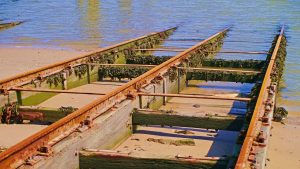
2. Reviews: Checking customer Reviews and Testimonials of the Shipyard in Manila
Before choosing a shipyard in Manila for your shipbuilding or ship repair needs, it is essential to check customer reviews and testimonials. These first-hand accounts give insight into the quality of service and customer satisfaction provided by the shipyard. One important factor to consider is the overall rating of the shipyard based on multiple reviews. A high rating indicates that most customers had a positive experience, while a lower rating may be cause for concern.
In addition to the overall rating, pay attention to specific details mentioned in the reviews. Look for feedback on the efficiency of work, timeliness of delivery, communication with customers, and adherence to safety standards. Positive remarks in these areas are indicators of a reliable shipyard that values professionalism and a customer-centric approach. On the other hand, negative comments may highlight areas where improvement is needed or red flags that should not be ignored.

3. Facilities: Assessing the Facilities and Equipment Available at the Shipyard in Manila
Assessing the facilities and equipment available at a shipyard is of utmost importance when looking for the best shipyard in Manila for shipbuilding and ship repair. Having state-of-the-art facilities not only ensures that the work can be carried out efficiently but also guarantees a high standard of quality.
Firstly, it is crucial to evaluate the dry docks and slipways at the shipyard. These are essential for lifting ships out of the water and providing a safe working environment during repairs or construction. A modern shipyard should have multiple dry docks and slipways of various sizes to accommodate different types and sizes of vessels.
Secondly, one must consider the availability of advanced machinery and tools at the shipyard. Shipbuilding requires precision engineering, which can only be achieved with cutting-edge equipment. From welding machines to cranes, hydraulic presses to laser cutters, having these technologically advanced tools will greatly enhance both efficiency and safety in ship repair or construction projects.
Lastly, it is important to assess ancillary facilities such as workshops, warehouses, and accommodation areas for workers or visiting crew members, as well as access to reliable utilities like power supply and water resources. Having well-equipped workshops reduces downtime by enabling efficient storage, maintenance, and repair of equipment.
The assessment of facilities highlights how a properly equipped shipyard in Manila significantly impacts the outcome of any project undertaken within its premises. Accurate evaluations allow potential clients or investors to make informed decisions about what is suitable for their specific needs.

4. Expertise: Evaluating the Expertise and Experience of the Shipyard in Manila
When it comes to evaluating the expertise and experience of a shipyard in Manila, there are several factors to consider. One crucial aspect is the track record of the shipyard. Take a look at their portfolio and see if they have successfully completed similar projects in the past. This will give you an idea of their capabilities and whether or not they have the necessary expertise for your specific needs.
Another important element is the qualifications and skill set of their workforce. A shipyard in Manila with experienced Filipino engineers, technicians, and craftsmen who possess specialized knowledge in various areas of shipbuilding and repair is desirable. It shows that they have a team capable of handling complex projects with proficiency.
Furthermore, it’s beneficial to assess whether the shipyard in Manila has any certifications or accreditations from recognized organizations or associations. These certifications demonstrate that the shipyard in Manila meets certain quality standards, which can provide assurance about their level of expertise.
By considering these factors when evaluating a shipyard’s expertise and experience in Manila, you can ensure that you choose a facility equipped with skilled professionals who are well equipped to handle your shipbuilding or repair requirements effectively.
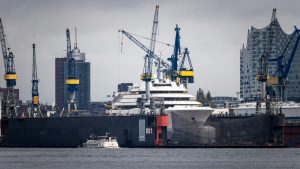
5. Cost: Comparing prices and Quotations from Different Shipyards in Manila
When it comes to shipbuilding or ship repair projects, cost is a significant factor that cannot be ignored. Every shipyard in Manila has its own pricing structure and quotation process. It is vital to compare prices from different shipyards to ensure you are getting the best deal for your project.
One important thing to remember is that the cheapest option may not always be the best. While it can be tempting to go with the lowest price, it is crucial to consider the quality of work and materials used by each shipyard in Manila. A slightly higher price may indicate better craftsmanship and superior materials, which could result in a longer-lasting and more reliable vessel.
Moreover, it is essential to request detailed quotations from each shipyard in Manila you are considering. This will enable you to compare prices accurately and understand what is included in each quote. Some shipyards may include additional services or perks that others do not, making their offers more competitive when looking at the overall value for money.
By thoroughly comparing prices and quotations from different shipyards in Manila, you can make an informed decision about which one offers the best combination of quality and affordability for your project’s needs. Remember, finding a balance between cost-effectiveness and excellent craftsmanship will ensure that your vessel stands up against harsh marine conditions while staying within budget.

6. Location: Considering the Proximity to Major Ports and Suppliers of the Shipyard in Manila
Choosing a shipyard in Manila for shipbuilding and ship repair involves various factors, with location being one of the most important considerations. Proximity to major ports and suppliers is crucial for ensuring smooth operations and timely completion of projects.
Being situated near major ports offers several advantages. First and foremost, it reduces transportation costs as materials can be easily sourced from nearby suppliers. This not only saves money but also ensures that the required equipment and components are readily available without any delays. Additionally, having easy access to ports simplifies the logistics involved in receiving shipments, allowing for convenient import and export activities.
Furthermore, close proximity to major suppliers provides shipyards with better leverage when negotiating prices. Being within reach of these suppliers allows shipyards to build strong relationships that can lead to more favorable terms for material purchases. Moreover, this proximity leads to quicker responses in cases of urgent requirements or unexpected issues during construction or repairs.
Taking into account the location factor when selecting a shipyard in Manila can significantly impact project timelines and overall efficiency. By choosing a shipyard near major ports and suppliers, businesses gain access to cost-effective sourcing options as well as improved flexibility in responding to fluctuating market demands. Therefore, it is essential to carefully assess the potential benefits offered by each location before making a decision on which shipyard is best suited for your needs.

7. Reputation: Checking the Reputation and Track Record of the Shipyard in Manila
When it comes to choosing a shipyard in Manila for shipbuilding and ship repair, checking the reputation and track record of the shipyard is crucial. A good reputation demonstrates the reliability and professionalism of a shipyard in Manila, making it more likely to provide high-quality services. One way to check the reputation is by looking for testimonials or reviews from previous customers. These can give you an insight into their experiences with the shipyard, including any delays or issues they may have faced during the project.
Additionally, researching the track record of the shipyard in Manila can help you gauge their level of expertise and experience in handling various types of ships and projects. Look for information on their past projects and clients to see if they align with your needs. It’s also worth considering how long they have been in operation, as this can indicate their stability and longevity in the industry.
Ultimately, choosing a shipyard in Manila with a positive reputation and proven track record ensures that you’re entrusting your vessel to professionals who are skilled at delivering quality results on time. So don’t overlook this important aspect while searching for the best shipyard in Manila for all your shipbuilding and repair needs.
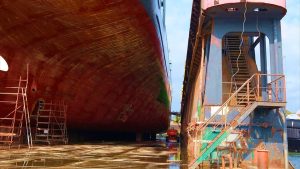
8. Certificates: Check for Necessary Certifications and Accreditations of the Shipyard in Manila
When searching for the best shipyard in Manila for shipbuilding and ship repair, it is crucial to check for the necessary certifications and accreditations. Certificates act as proof of a shipyard’s compliance with industry standards and regulations, ensuring that they adhere to quality control measures and safety protocols. Reputable shipyards will proudly display their certifications on their website or provide them upon request.
Among the essential certificates to look out for are ISO 9001:2015, which demonstrates a commitment to quality management systems, and OHSAS 18001:2007 or ISO 45001:2018, indicating compliance with occupational health and safety requirements. Additionally, class society approvals from well-known classification societies like Lloyd’s Register or Bureau Veritas signify that the shipyard in Manila meets international standards for construction or repairs. By verifying these certificates before choosing a shipyard in Manila, you can ensure that your project will be handled by professionals who prioritize quality, safety, and environmental responsibility.
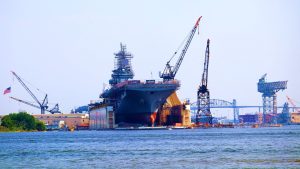
What is the Alternative Shipyard in Manila?
Another alternative option for a shipyard in Manila is located in Cavite, just south of the city. This shipyard in the Philippines offers a wide range of services for shipbuilding and ship repair, making it a great choice for both commercial and industrial vessels. With its strategic location near major ports and shipping routes, the Cavite shipyard is convenient for clients looking to have their ships repaired or built quickly.
What sets this shipyard apart from others in Manila is its state-of-the-art facilities and skilled workforce. Equipped with modern technology and machinery, they can handle even the most complex projects with ease. The team of experienced Filipino engineers and technicians ensures that every vessel receives top-notch care and attention to detail throughout the entire process.
Moreover, this alternative shipyard prides itself on delivering projects on time without compromising quality. Their efficient workflow allows for faster turnaround times, minimizing downtime for clients’ vessels. Additionally, their competitive pricing makes them an attractive choice for businesses looking to cut costs without sacrificing quality.
Whether you need a new vessel or require repairs on your existing one, consider exploring this alternative shipyard in Cavite. It offers reliable service, advanced facilities, and skilled Filipino workers—all within close proximity to Manila’s bustling maritime industry.
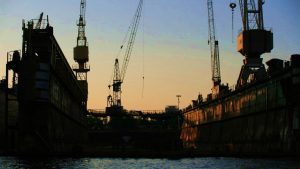
History of Shipyards in Manila
Manila, the capital city of the Philippines, has a long and rich history when it comes to shipyards. The origins of shipbuilding in Manila can be traced back to the Spanish colonial period in the 16th century. During this time, galleons were constructed in Manila’s shipyards to facilitate trade between Spain and its colonies in Asia. These galleons played a crucial role in transforming Manila into a flourishing port city.
Over the centuries, the shipbuilding industry in Manila continued to thrive and expand. During World War II, several shipyards in Manila were heavily damaged as a result of bombings by Japanese forces. However, after the war, efforts were made to rebuild and rehabilitate these shipyards in Manila. Today, Manila is home to some of the largest and most technologically advanced shipyards in Southeast Asia.
The history of shipyards in Manila demonstrates not only the city’s maritime heritage but also its resilience and adaptability throughout different periods of time. The development and growth of these shipyards in Manila have contributed significantly to both local employment opportunities and national economic development. As Manila continues to evolve as an industrial hub for shipbuilding and repair services, it is worth appreciating how its rich history has shaped it into what it is today: a thriving center for maritime activity.
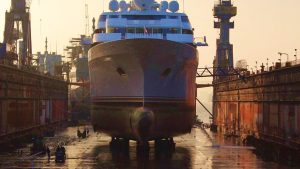
Why Shipyards in Manila Are Hub for Shipbuilding
The industry of shipyard in Manila has long been recognized as a hub for shipbuilding, and for good reason. One of the main factors is the city’s strategic location, situated along the coast of the Philippines, making it easily accessible for both domestic and international clients. This convenient location ensures a smooth flow of materials and equipment needed for shipbuilding projects.
Moreover, Manila boasts a highly skilled workforce with expertise in various aspects of shipbuilding. The city is home to several maritime schools and training centers that produce well-trained professionals who are adept at handling complex shipbuilding processes. This abundance of skilled workers not only allows shipyards in Manila to complete projects efficiently but also ensures high-quality craftsmanship.
Additionally, Manila offers an ideal environment for shipbuilding due to its favorable weather conditions. With relatively calm seas throughout most of the year, it minimizes disruptions in construction schedules and allows for uninterrupted workflow. Having such reliable weather patterns greatly contributes to the timely completion of projects and overall customer satisfaction.
The thriving shipyard industry in Manila can be attributed to its strategic location, skilled workforce, and favorable weather conditions. These factors make it an attractive destination for clients looking for top-notch shipbuilding services. Whether you’re in need of new vessel construction or repair work on an existing one, Manila’s shipyards offer unrivaled expertise combined with efficiency and reliability that no other place can provide.

Why Shipyards in Manila Are Hub for Ship Repair
The industry of shipyard in Manila has seen significant growth in recent years, making it a hub for ship repair. One of the key factors contributing to this is the strategic location of Manila, which allows easy access to major shipping routes and trade hubs in Asia. This makes it an attractive choice for Filipino shipowners and operators looking for efficient and cost-effective ship repair solutions.
Another reason why the shipyard in Manila is a hub for ship repair is the availability of skilled labor. The city has a large pool of experienced Filipino engineers, welders, fitters, and other technical professionals who are well-versed in various aspects of shipbuilding and repair. This ensures that ships can be repaired quickly and effectively with minimal downtime.
Additionally, the infrastructure in Manila’s shipyards is top-notch. Many of the facilities are equipped with modern machinery and equipment necessary for carrying out complex repairs on vessels of all sizes. This ensures that ships can be repaired efficiently and to high standards.
All these factors combined make Manila an ideal destination for Filipino shipowners and operators seeking reliable and efficient ship repair services. The growing reputation of its shipyards as centers of excellence further solidifies its position as a hub for ship repair in the Asia-Pacific region.

Why Manila is the Capital of the Philippines?
One of the main reasons why Manila is the capital of the Philippines is its rich historical background. Manila has served as a political and cultural center for centuries, dating back to Spanish colonial rule. The city’s strategic location along Manila Bay made it an ideal trading hub, attracting merchants from across the region. Over time, Manila grew in importance and became the center of governance for the country.
Secondly, Manila boasts a strong infrastructure that supports both local and international businesses. The city has a well-developed transportation network with an international airport, multiple seaports, and extensive road systems connecting different parts of Luzon Island. This accessibility makes it easier for shipbuilding and ship repair companies in the Philippines to transport their materials and products in and out of Manila.
Furthermore, Manila offers a diverse pool of skilled labor. The city has several universities and vocational institutions offering engineering programs that specialize in marine-related industries. This means there is a steady supply of qualified professionals who are proficient in shipbuilding and repair techniques.
There are several factors that contribute to making Manila the capital of the Philippines. Its historical significance, strong infrastructure, and skilled labor make it an attractive location for Filipino shipbuilding and ship repair companies looking for reliable services in Southeast Asia. So, if you’re searching for the best shipyard for your needs, considering those factors will lead you to Manila as a prime candidate worth exploring further.

What Does a Shipyard in Manila Do?
A shipyard in Manila is a hub of activity where ships are built, repaired, and maintained. With its strategic location near major shipping routes and access to skilled workers, Manila has become a go-to destination for shipbuilding and ship repair. In these bustling yards, enormous vessels take shape as steel plates are meticulously welded together.
Shipyards in Manila offer a range of services, including hull construction, outfitting, painting, and mechanical works. These facilities are equipped with state-of-the-art technology and machinery to handle the complex demands of modern ships. Skilled craftsmen work diligently to ensure that every aspect of the vessel meets strict standards for safety and efficiency.
The shipyards in Manila also play a significant role in the country’s economy. They provide employment opportunities for thousands of local workers who contribute their expertise to the maritime industry. Furthermore, these shipbuilding yards attract foreign investors who recognize the competitive advantage of locating their operations in Manila. The constant flow of projects ensures a steady stream of income for both the workers and the local economy as a whole.
A shipyard in Manila is far more than just an industrial space; it represents innovation, craftsmanship, and economic growth. These facilities have become vital components for building some of the world’s largest vessels while providing employment opportunities at various skill levels within local communities. As new technologies emerge within this sector, these yards continue to adapt and evolve to meet global demands, creating exciting possibilities for both professionals within the industry as well as those observing from outside its gates.
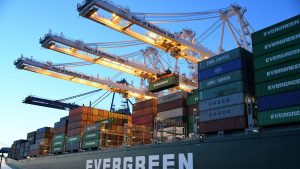
What are the Famous Ports in Manila?
One of the thriving industries in Manila is its maritime sector, which is made possible by its famous ports. In this bustling city, you’ll find several ports that play a crucial role in the country’s trade and commerce.
The Port of Manila, located along the mouth of the Pasig River, is a major gateway for both international and domestic shipments. It handles a significant volume of cargo traffic and serves as an important access point for various industries. With its strategic location near major roads and highways, the Port of Manila ensures efficient transportation of goods to different parts of the country.
Another well-known port in Manila is the North Harbor, or Pier 4. Known as one of the busiest passenger terminals in Metro Manila, it serves as a hub for ferry services to nearby islands such as Palawan and Mindoro. The North Harbor also facilitates cargo handling operations, making it an essential port for both passenger transport and logistics support.
These famous ports in Manila are not just vital components of the city’s economy but also gateways to various opportunities for trade and travel within and beyond Philippine waters. From facilitating international imports and exports to providing seamless connections between different parts of archipelagoes, these ports form an integral part of the maritime infrastructure that keeps Manila sailing smoothly toward economic growth.

Final Thoughts: 8 Ways to Find the Best Shipyard in Manila for Shipbuilding and Ship Repair
In conclusion, finding the best shipyard in Manila for shipbuilding and ship repair can be confusing and tiring, but with these eight ways, you are sure to make an informed decision. Firstly, conducting thorough research on reputable shipyards in Manila is crucial to ensuring they have the necessary facilities, resources, and expertise. Secondly, seeking recommendations from industry professionals and other Filipino shipowners can provide valuable insights into the quality of workmanship offered by different shipyards.
Furthermore, considering the track record of a shipyard in Manila is essential. Look into their past projects and ask for references to understand their capabilities better. Additionally, visiting the shipyard in person allows you to assess its infrastructure and see firsthand how it operates. Collaborating with local agencies or organizations that have experience in maritime matters will also help streamline your search for the best shipyards.
Moreover, it is vital to evaluate the cost-effectiveness of a shipyard’s services. While cheaper options might seem appealing initially, it is essential to consider factors such as quality assurance and timely delivery as well. Finally, keeping an eye on emerging trends in technology and sustainability practices within the industry will ensure that you choose a forward-thinking shipyard in Manila that aligns with your long-term goals.
Finding the best location for shipping services like building ships may not always be easy, but following these eight ways will certainly increase one’s chances of making an informed decision! In summary, do thorough research, seek recommendations, consider track records, visit potential sites personally, collaborate with local maritime experts, evaluate cost-effectiveness and efficiency, prioritize quality and safety standards, and stay updated on industry trends. By following these steps, you can make a well-informed decision that aligns with your business goals and ensures the success of your shipping operations.



